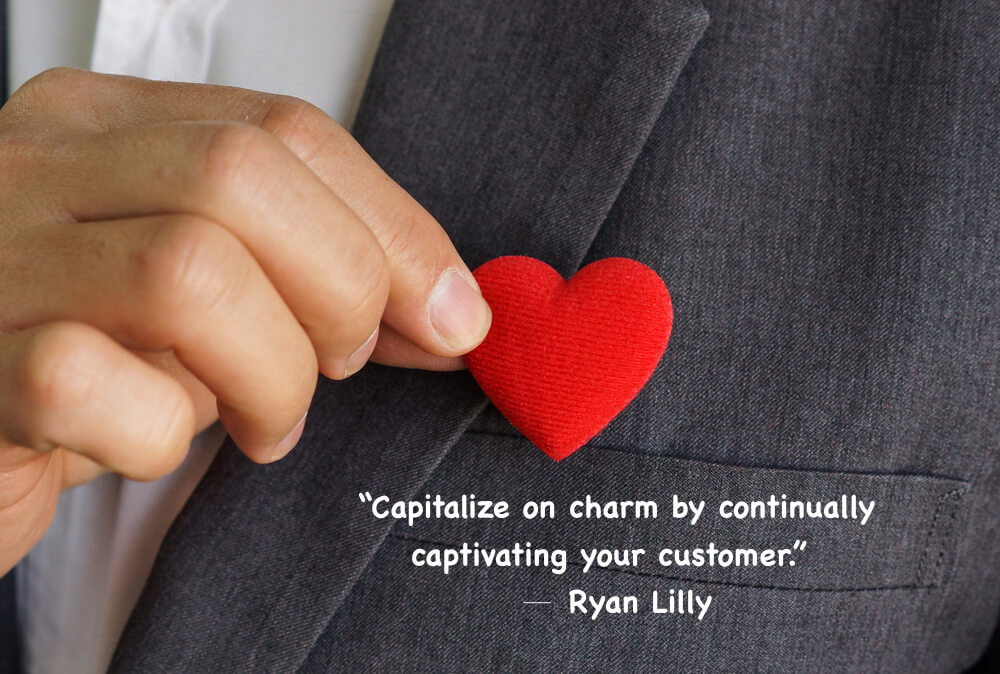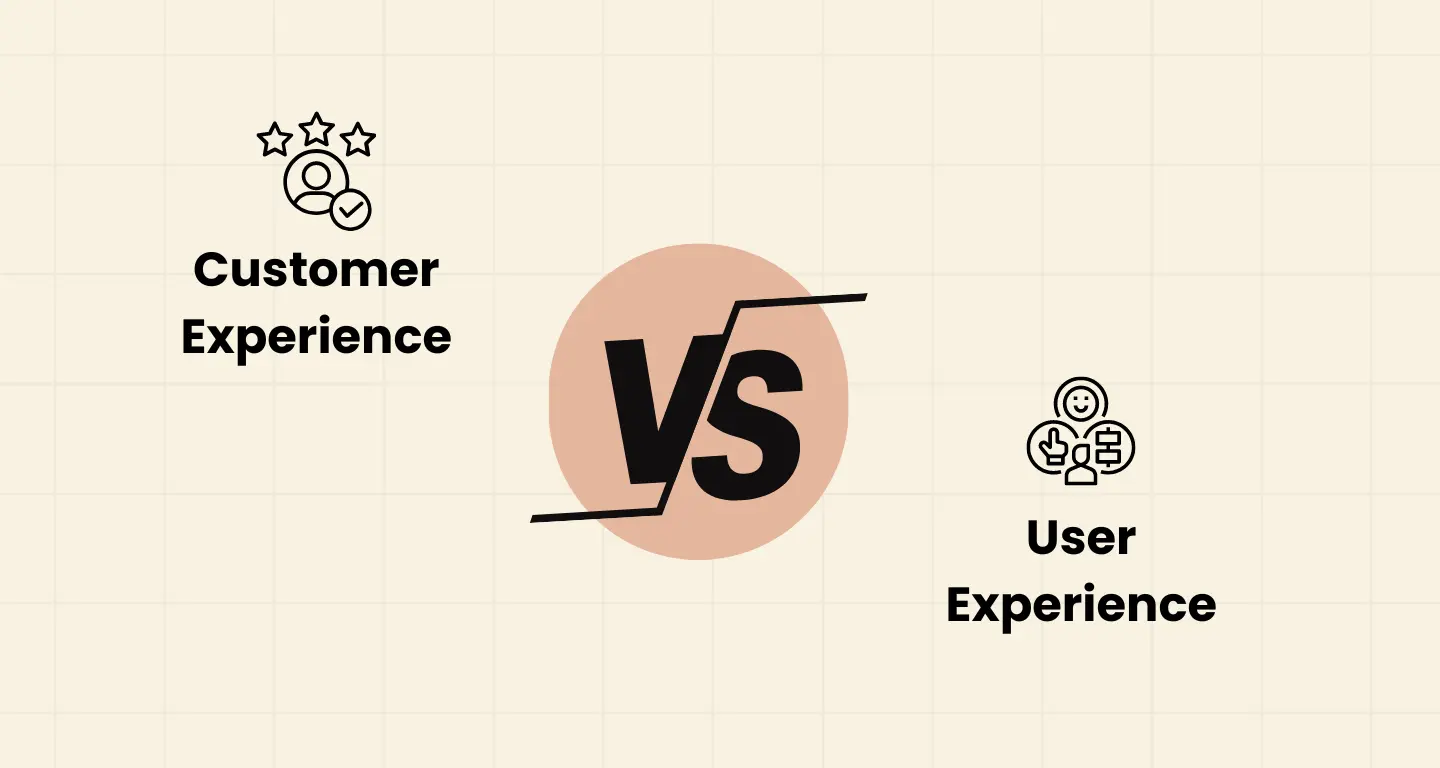Customer Experience
The Average Customer Retention Rate By Industry
Article written by Indhuja Lal
A dilettante bohemian soul mesmerized with the magic of words, sworn to be unpredictable, and spellbound with the simplicity of humanity...
13 min read
19 September 2025

Are you wondering what’s the average customer retention rate by industry?
Imagine that you are in the hotel business. According to AHLA (American Hotel & Lodging Association), 50,000+ properties offer similar services in the United States alone. A tourist lands in your country. What are the odds that the tourist will choose you?
Simply increasing the traffic to your showroom or website wouldn’t do the trick anymore.
Besides that, you need to give your customers something to stay around. That is what drives the average strong customer retention rate.
What is a good customer retention rate?
Now you have an idea about customer retention and how important it is to carry on customer loyalty programs that are just apt for that. Let’s get into the customer retention rate you should target.
I should tell you that a 100% customer retention rate is far from reality. That’s because customer retention rates differ for different businesses according to the industry they are working in, and the size of your company. You cannot possibly compare the customer retention rate held as a benchmark for a music app company to a company that sells hair care products.
Nevertheless, consistently high customer retention rates bring in increased profits. If you want to make your mark and be set apart in your industry, you need to up your game with these customer retention tips. Also, customer feedback software like SurveySparrow helps you capture and respond to customer feedback from multiple touchpoints.

You can create a free account to try out SurveySparrow for your business. Bonus: Get access to free templates and tools to help you grow. Sign up below.
14-day free trial • Cancel Anytime • No Credit Card Required • No Strings Attached
What’s the average customer retention rate by industry?
In many industries, the average customer retention rate of the top five companies stands at around 94%. So let’s break down the average customer retention rate by industry in 2022.
Insurance
The average insurance customer retention rate is 84%. This 10% difference between the top companies and the norm implies a massive loss of potential revenue. So reducing the customer churn as little as 2% a year can cut costs up to 10%.
With higher customer acquisition costs than any other industry, the Insurance sector has to be daring enough to go beyond average retention programs to minimize the damage caused by customer churn.
Retail
The retail customer retention rate currently stands at 63%. As people try to resume their pre-pandemic shopping habits, retail is projected to become one of the fastest-growing sectors. Apparel and accessories are seeing sales jumps of 30% in the US alone.
The only problem? With the growth of online shopping, customers are bombarded with options, discounts, and similar products, which accounts for the low retention rates.
Banking
Customer retention in banking is one of the highest at 75%. This is in largely due to people treating a bank account like an investment. Also, people will not move to another bank during uncertain times like the one we experienced during the lockdown. Instead, they are going to hunker down and stick with what they’ve got.
However, as economies start recovering, people might feel inclined to shop around for a new bank if they are dissatisfied with the service. So 2022 could potentially see retention rates drop.
SaaS
For SaaS industries, an average customer retention rate of 35% is good enough, according to a Mixpanel report.
However, it’s best not to focus on customer retention benchmarks alone because no two SaaS companies are alike. They would have different goals, customer journeys, pricing models, sales processes, target markets, and even different average contract values.
Hospitality, Travel & Restaurants
According to data from Statista, hospitality had the lowest customer retention rates at 55% – and this was before the pandemic. With today’s demanding, safety-conscious travelers, customer loyalty program points and rate slashes aren’t adding up to engagement or repeat business like they used to.
Also, travelers have more choices than ever for places to stay, especially with the explosion of slow travel, OTAs, Airbnbs, and private vacation rentals. Choosing one is like picking a needle from a haystack. So if you don’t stand out throughout the customer experience journey, you’re invisible.
Media
For many industries, the average customer retention rate for two months is below 20%, whereas it is over 25% for the products in the media. That’s because media companies focus on large customer volumes.
What’s more, while they might find it hard to personalize their products, these companies will make up for the lack of personalization with extensive marketing and retargeting budgets.
Fintech
The customer retention rate for fintech apps stands slightly below the average at 37%. On the other side of the same coin, 73% of new app users churn within the first seven days. Ouch!
From this data, it is clear that onboarding is the key to boosting retention rates. What’s more, updates based on feedback from power users can significantly help the product scale and drive user loyalty without spending a dime.
Ed-tech
Education apps saw the worst annual retention rates at just 4%. This was partly due to factors beyond the companies’ control – like the scramble to adjust to remote learning and network issues.
But many ed-tech apps also experienced glitches in-app, which frustrated users. On the other hand, app developers who proactively responded to in-app and play-store feedback got a 94% response rate.

6 customer retention statistics (trends + data) you need to know before 2024
- AI search visibility will directly impact retention rates: According to Right Thing Agency, businesses that are not visible in AI search results risk lower retention. Customers who only need a service occasionally often forget the provider and re-search their options, making AI visibility essential for repeat business. Early data shows that brands optimized for AI-driven search experiences see up to a 14% higher repeat customer rate compared to those that aren’t, as customers are more likely to return when the brand is suggested in conversational search results.
- Customer experience will not automatically convert into brand loyalty. According to an article by the Zinto Marketing Group:
- While 84% of buyers want to know how you treat customers, 70% also want to know if you treat your employees well.
- Moreover, more than half your customers will look at your commitment to social issues, like racial inequality, environmental impact, etc.
- Data privacy will be a key factor in consumer trust. According to a report by Gartner, 75% of the total population will have their personal data covered under privacy regulations by 2024.
- Employee experience (EX) will play a key role in CX. When your employees are equipped with the training, tools and environment they need, they will have the motivation to perform outstanding customer service – leading to better retention.
- Conversational experience as a defining factor. From conversational marketing to feedback and support, more brands will use AI automation and personalized, targeted messaging to engage with consumers in real-time. Data by Salesforce upholds this; 71% of customers expect brands to communicate with conversational bots in real time
- The rise of omnichannel commerce. A transaction is a transaction, regardless of whether it made online or offline. The opportunity lies in building a smooth, consistent experience between these touchpoint.
How do you develop a customer retention program?
- Elevate the customer experience
- Create and deliver a very personalized experience
- Work on your relationships
- Referrals are a powerful strategy
- Panicking never helps
- Use multiple benchmarks
- Collect feedback from your customers
- Do retention analysis
- Use a proper online survey tool
1. Elevate the customer experience.
It is your best option to retain the customers. And while you’re at it, why don’t you check out these customer retention strategies from the world’s best brands?
2. Create a personalized experience.
For your customers to be satisfied with you and your products, you need to create and deliver a very personalized experience. And how would you do that? By creating extensive customer profiles. Consider using a
3. Work on your relationships.
From discounts to personalized emails, the opportunities are everywhere for you to jump in and exploit. Spoil your customers with attention and care but be careful enough not to smother them in love.
4. Referrals are a powerful strategy.
They are used to consistently ensure high customer loyalty, increasing the average customer retention rate. In addition, it is economical since referred customers boast the lowest acquisition costs. Yet they generate an average of five times more revenue than the other customers. They also have a 92% retention rate, whereas customers from other sources only have 76%.
5. Panicking never helps.
It’s the same with your business. You are expected to compare yourself with your competitors. But if you are a start-up and you are comparing yourself with a giant MNC in your industry, you are going to worry yourself to death! While choosing your comparison model, consider the size, the specialization, the reach of the company.
6. Choose multiple benchmarks.
When you are putting a benchmark, you should define it against what you are comparing. For example, you could have two benchmarks in this scenario. One is against yourselves and the second one is against your competitors in the same industry.
7. Collect feedback from your customers.
Employ a customer feedback tool or form builder app, and create an engaging customer feedback survey.
8. Carry out retention analysis.
Measure your performance weekly or monthly against the benchmark set against yourself. And if you find that it is going down, your product team could take necessary actions to bring it back up.
9. Use a proper online survey tool.
What’s more, your surveys should help you watch these trends up-close and catch them before your competitors. With real-time reports and data dashboards, SurveySparrow helps you do all that and more.
How to calculate the Customer Retention Rate (CRR) for your company
CRR = [E-N /S ] X 100
Where E denotes the number of customers at the end of the period. N represents the number of customers you acquired during the period, and S stands for the number of customers at the start of the period.
Voila! There you have it! As simple as that.
Do you want an example to get a clearer idea? Alright.
Let’s say you had 100 customers at the start of the two-month period you are tracking (S). During that period, you lost 11 customers, but you managed to gain 40 (N) customers. This means you have your existing 121 customers and (40-11) 39 other customers at the end of the period.
Putting these numbers into the formula, you have :
CRR = [(139-40)/111] X 100
CRR = 89.2%
This means that the customer retention rate for this particular period is 89.2%.
The ideal average customer rate by any industry should be 100%. This means you didn’t lose even a single customer. However, this is not a number that you can set as a benchmark.
You should shoot for at least 85% of the average customer retention rate of whichever industry you are in to remain strong and scalable.

Clearing up some confusion!
Customer churn is inversely proportional to customer retention. For example, if I tell you the customer churn for ABC Company is really high, it is because the customer retention rate for the same company is very low.
That said, the more specialized the service, the fewer new customers you can expect. Since the choices you give the target audience are less. For brands that offer specialized services and products, the average customer retention rate should be higher than others in the same industry.
Customer retention is the backbone of your company since it drives customer loyalty, which in turn leads to better sustainability and scale your business. For that, you need to invest a good amount of money, effort, and time in an effective customer retention program. Furthermore, the program should incorporate the size, objectives, and specialization of your company.
A retention rate is the percentage of customers who are staying with the company after a specified time interval.

Wrapping Up
You will lose a few customers, no matter what you do or how much you try. The ideal 0% churn is only an ideal. That being said, you can’t ignore a lower than average customer retention rate by industry. You have to go back and isolate the causes that led to the numbers.
I admit that it is a lot of work and also time-consuming. But the statistics show that retention strategies pay off in the long run. After all, acknowledging and improving your customer retention rates will only make tomorrow better!

Make your customers feel heard. Turn feedback into loyalty with SurveySparrow's CX platform.
Indhuja Lal
Product Marketer at SurveySparrow
Related Articles

Customer Experience
Customer Experience vs. User Experience: Key Differences and Examples
9 MINUTES
26 July 2023

Customer Experience
Top 10 Inevitable Trends Shaping Customer Experience in Banking
8 MINUTES
22 June 2023

Customer Experience
How to Craft A Personalized Restaurant Customer Experience
9 MINUTES
31 August 2023

Customer Experience
What Is Customer Experience Management & Why It Matters
14 MINUTES
14 December 2020

